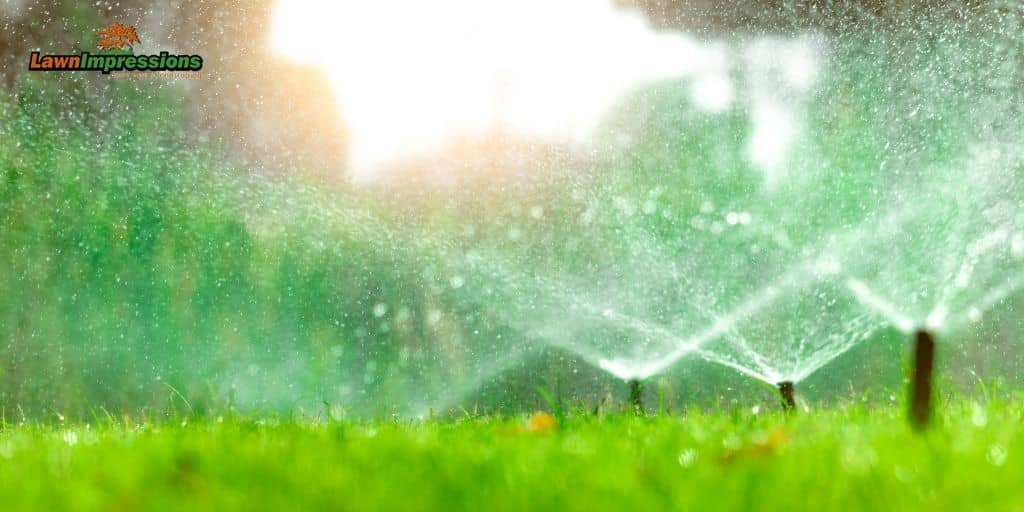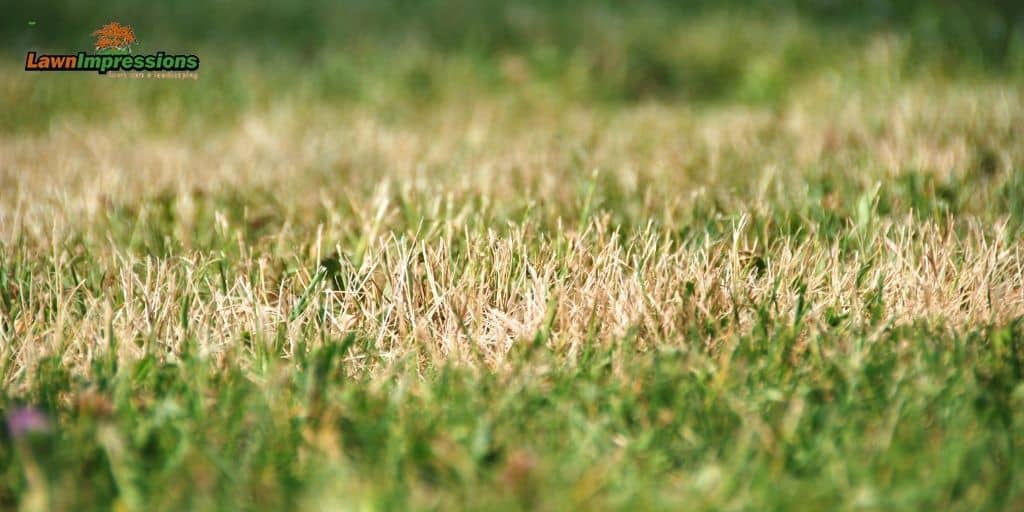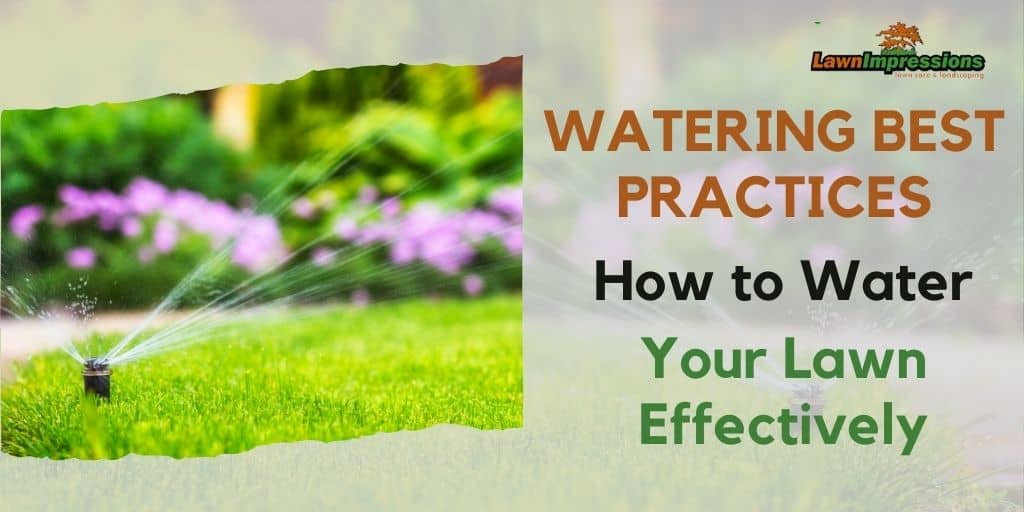Do you ever feel like no matter how much water you pour on your lawn, it’s still patchy, dry, or unhealthy? You’re not alone. A lush, green lawn is the dream of most homeowners, but achieving it isn’t always as simple as turning on the hose. Overwatering can lead to mold and fungus, while underwatering stresses your lawn and makes it vulnerable to bare patches. Many people have the best intentions but don’t realize that how you water your lawn is just as important as how often you do it.
Here’s the good news: taking the time to learn watering best practices can save your lawn and completely transform its health. In this guide, you’ll discover simple, expert-approved strategies to water your lawn effectively—without wasting water or money.
Table of Contents
- How Much Water Is Enough for Your Lawn?
- When and How Often Should You Water Your Lawn?
- Tools of the Trade: Choosing the Best Watering Equipment
- Fighting Problems: How to Recognize Overwatering or Underwatering
- Water-Saving Hacks for a Greener Lawn
- Bringing Lawn Care to Life: Start Watering the Right Way
- Quick FAQs About Watering Best Practices
How Much Water Is Enough for Your Lawn?
Understanding how much water your lawn needs is key to avoiding common mistakes like overwatering or underwatering. Most lawns require about an inch of water per week, but other factors, like grass type and soil quality, can affect this requirement.
🌱 Know Your Grass Type
Different grass species have varying watering needs. For example:
- Cool-season grasses (e.g., fescue and ryegrass): These thrive in mild weather and need about 1–1.5 inches of water weekly.
- Warm-season grasses (e.g., Bermuda and Zoysia): These handle heat better and typically need 1 inch of water per week.
Pro Advice: Knowing your lawn’s grass type helps tailor your watering schedule so you’re not giving it too much or too little hydration.
RELATED: Bermuda Grass VS Fescue Grass VS Zoysia Grass
💧 Soil Plays a Big Role
Soil type directly impacts water retention, so understanding it can make watering more effective:
- Sandy soil: Drains quickly, meaning more frequent but shorter watering sessions.
- Clay soil: Retains water longer but absorbs it more slowly. Water deeply but less often.
- Loam soil: The ideal balance, holding moisture well without getting soggy.
Pro Tip: Conduct a soil test to understand your lawn’s makeup—it’s worth the time in the long run!
📏 Stick to the Weekly 1-Inch Rule
An easy way to ensure you’re watering just the right amount is to place a shallow cup on your lawn while sprinklers run. Aim for an inch of water, including rainfall, over the week. If rainy days bring enough moisture, adjust accordingly to avoid overwatering.

When and How Often Should You Water Your Lawn?
Watering your lawn at the right time is just as important as how much water you use. The time of day, weather patterns, and even how frequently you water can affect your lawn’s appearance.
⏰ Morning vs. Evening Watering
The best time to water your lawn is early in the morning, between 6 a.m. and 9 a.m. Morning watering minimizes evaporation since temperatures are cooler, and it gives the grass time to dry before nightfall. Watering at night is less ideal because moist conditions combined with darkness can lead to fungal growth and diseases.
☀️ Watch Out for Midday Heat
Midday watering may seem convenient, but it’s not effective. During the heat of the day, water evaporates quickly and doesn’t reach the roots. Stick with early morning for the best results.
🔍 Signs Your Lawn Needs Water
Not sure if your lawn is thirsty? Watch for these signs:
- Grass blades fold inwards or look wilted.
- Footprints linger on the lawn.
- A screwdriver struggles to penetrate the soil when testing for moisture depth.
Tools of the Trade: Choosing the Best Watering Equipment
Having the right tools ups your watering game significantly. Whether you’re managing a small plot or an expansive yard, there’s a tool to make the job easier.
🚿 Sprinkler Systems
Sprinklers are the go-to tool for most homeowners, offering wide, even water coverage. Options include:
- Oscillating sprinklers: Perfect for rectangular lawns and even coverage.
- Rotary sprinklers: Ideal for large, circular areas.
- Smart sprinkler systems: Allow water management through your phone, automatically adjusting based on weather forecasts.
Pro Tip: Look for adjustable models to reduce water waste.
💦 Drip Irrigation and Soaker Hoses
For targeted watering, drip irrigation and soaker hoses deliver water directly to the soil. This method minimizes water waste and is particularly good for flower beds, shrubs, or areas with clay soil. These hoses are perfect for targeted, water-efficient care:
- Deliver water directly to the soil.
- Prevent evaporation, even on sunny days.
- Ideal for smaller yards or flower beds.
🌧️ Rain Gauges and Water Timers
A rain gauge is a simple yet effective tool for monitoring weekly water levels. Position one in your yard to ensure your combined watering and rainfall totals reach the ideal 1-inch mark.
Fighting Problems: How to Recognize Overwatering or Underwatering
Striking the right balance between too much and not enough water is critical for having a healthy lawn.
🌀 Signs of Overwatering
Overwatering is a common mistake. It results in soggy soil, root rot, and fungal growth. Look for these symptoms:
- Yellowing grass: Too much water washes away nutrients.
- Pooling water: Sprinklers running too long leads to runoff.
- Spongy grass: Your lawn feels mushy when you step on it.
Pro Tip: Reduce watering frequency and aerate the soil to improve drainage.
💧 Symptoms of Underwatering
Underwatered grass becomes stressed and looks unhealthy over time. Watch for:
- Grass turning brown or gray.
- Footprints staying visible on the lawn.
- Grass blades folding or curling.
Pro Advice: Deep watering a couple of times a week prevents these problems while promoting root penetration.

Check for Root Rot or Thinning Areas:
Root rot (caused by overwatering) and bare patches (caused by underwatering) tell you something’s wrong. Aeration, reseeding, and balancing water input can help these areas recover.
🔄 Test Your Soil for Moisture
An easy way to check for watering issues is to push a screwdriver into the soil. If it goes in easily, your lawn is hydrated. If it’s tough, it’s time for a good watering session.
RELATED: Bare Spots in Lawn: Tips and Solutions to Restore a Healthy Yard
Water-Saving Hacks for a Greener Lawn
Keeping your lawn hydrated doesn’t have to mean wasting water. By practicing water conservation, you can keep your grass green without harming the environment.
🌱 Use Mulch to Retain Moisture
Adding a layer of mulch around garden borders or trees helps the soil retain water longer and reduces evaporation. Plus, it keeps roots cooler during hot spells.
💡 Install Smart Irrigation Systems
Smart sprinklers and timers allow you to schedule watering efficiently based on weather patterns. These systems minimize overuse by automatically skipping sessions during rainy or wet conditions.
🌞 Adjust for Weather
In hot summers, increase watering frequency slightly. During rainy spells, skip watering entirely. Invest in weather-smart sprinklers that adjust automatically based on the climate.
RELATED: Summer Lawn Care Tips For NC and SC Homeowners
🚰 Avoid Runoff
When watering your lawn, take note of how much water is pooling. Running sprinklers for too long can overwhelm the soil, leading to wasted water that runs down the sidewalk. Instead, opt for shorter, repeated sessions.
🌵 Drought Strategies
If you live in a drought-prone area, consider these tips:
- Focus watering efforts on the lawn’s most high-traffic areas.
- Choose drought-resistant grass varieties.
- Limit mowing height to retain grass blade moisture.
Bringing Lawn Care to Life: Start Watering the Right Way
Proper watering is the key to a lush, healthy, and thriving lawn. By understanding your grass type, timing your watering sessions correctly, using the right tools, and adapting to your lawn’s unique needs, you can maintain a beautiful lawn without wasting water.
Now that you know the watering best practices, it’s time to implement them! Take the first step today—run a soil test, adjust your watering schedule, or upgrade to a smarter watering system. Your lawn (and the planet) will thank you.
If you found these tips helpful, share them with a fellow homeowner or leave a comment with your own lawn care success story. Let’s grow greener together! 🌱
Ready to Transform Your Outdoor Space? Contact Lawn Impressions Today!
Let the trusted professionals at Lawn Impressions handle all your landscaping, hardscaping, and turf care needs. Whether you’re looking to create a lush front yard, revamp your backyard, or maintain your lawn year-round, we’ve got you covered.
👉 Contact us at 704-733-9699 or via our website to bring your dream lawnto life.
Serving Harrisburg, Concord, and surrounding areas, Lawn Impressions is here to make your outdoor space stunning and worry-free!
Our Services Include:
Quick FAQs About Watering Best Practices
1. How often should I water my lawn?
Most lawns need about 1–1.5 inches of water per week, ideally spread over 2–3 deep watering sessions. This encourages roots to grow deeper and promotes a healthier lawn.
2. How can I tell if I’m overwatering my lawn?
Common signs of overwatering include yellowing grass, mushy soil, pooling water, and a spongy texture. Adjust your watering routine and aerate the lawn to fix drainage issues.
3. What tools are best for efficient watering?
Sprinklers (manual or smart systems), rain gauges, and soaker hoses are great tools to ensure consistent, even coverage. Smart systems in particular help conserve water by adjusting for weather conditions.
YOU’LL ALSO LIKE:

